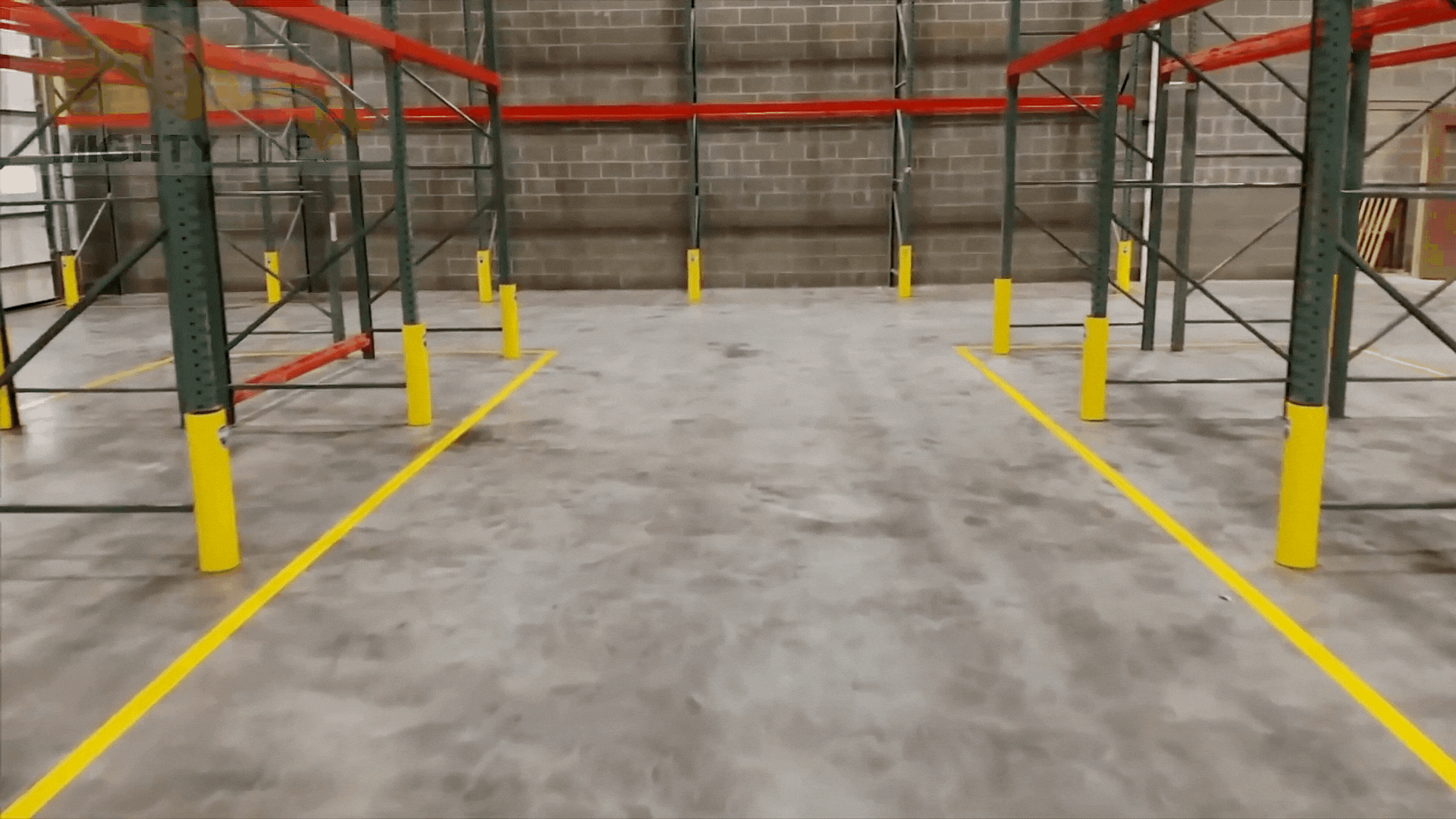Sensors for LED projected floor markings—what are the best options?
 By
Alana Graham
·
3 minute read
By
Alana Graham
·
3 minute read
Imagine walking into a warehouse where the pathways are illuminated with vibrant LED markings. These projected floor markings not only guide pedestrian traffic but also enhance the organisation of the warehouse and dramatically improves safety if used correctly. But what happens when these visuals need to adapt to the dynamic environment around them?
This is where sensors and detectors come into play, ensuring that your LED floor markings are as effective as possible.
When needing to manage heavy machinery in a bustling factory, having the right sensor can make all the difference, as it can be the difference between a warning sign appearing and stopping the pedestrian from being hit by MHE, and a tragic incident. Let’s explore some of the best options available for optimising your LED projected floor markings and making your space safer and more efficient.
Why do you need a sensor for your projected LED floor marking?
In the fast-paced environments of warehouses and retail spaces, adaptability is key. Projected LED floor markings serve as visual guides, but without sensors, they can fall short in responsiveness.
Sensors enhance these markings by detecting movement and adjusting accordingly. Imagine a scenario where foot traffic fluctuates throughout the day; with sensors in place, your LED projections can shift to accommodate changing pathways or highlight critical areas when needed.
Moreover, safety is paramount. Sensors help prevent accidents by alerting pedestrians about approaching vehicles or machinery. This proactive approach fosters a safer environment for everyone involved.
Additionally, integrating sensors allows for real-time monitoring of high-traffic zones. By analyzing data collected from these devices, businesses can make informed decisions about layout adjustments based on actual usage patterns.
PIR Sensors
PIR sensors, or Passive Infrared Sensors, are a popular choice for enhancing LED projected floor markings. They detect motion by sensing changes in infrared radiation. When someone walks within their range, they trigger the light display.
These sensors work effectively in various settings—warehouses, retail spaces, and even parking lots. Their ability to conserve energy makes them an excellent option for businesses aiming to reduce costs while maintaining safety.
Installation is straightforward; simply place them where you want to monitor foot traffic. With minimal maintenance required afterward, they provide ongoing efficiency.
Moreover, PIR sensors can be finely tuned to respond only when necessary. This flexibility allows businesses to create dynamic environments that enhance navigation without overwhelming users with constant lighting changes.
Microwave sensors
Microwave sensors are a fascinating option for enhancing LED projected floor markings. They operate by emitting microwave signals, which bounce off objects in their environment.
When something enters the sensor's field, it detects the change in frequency of these waves. This means they can pick up movement even through obstacles like walls or stacks of goods.
Their impressive range makes them ideal for larger spaces where traditional sensors might struggle to provide coverage. Additionally, they can be tuned to ignore small movements like those from people walking by while still detecting larger assets such as forklifts.
These sensors have become increasingly popular due to their reliability and versatility. Their ability to function effectively in various conditions ensures that your projected markings remain relevant and efficient at all times.
Fork Lift Truck proximity tag
Forklift truck proximity tags are innovative tools designed to enhance safety in busy environments. These small devices attach easily to the forklift and communicate with designated sensors installed around the workspace.
When a tagged forklift approaches, the system activates alerts for pedestrians nearby. This provides an additional layer of awareness, reducing accidents significantly in high-traffic areas such as warehouses or manufacturing plants.
The technology behind these tags is sophisticated yet user-friendly. They can operate effectively without requiring extensive setup or maintenance.
Moreover, they integrate seamlessly with LED projected floor markings. As forklifts move closer to critical zones, the lighting adjusts automatically, guiding operators while keeping everyone safe.
Employing proximity tags not only enhances workforce safety but also promotes a culture of accountability among employees operating heavy machinery.
Through Beam sensor
Through beam sensors are another excellent option for enhancing the effectiveness of LED projected floor markings. These sensors operate by creating an invisible light beam between two points. When an object crosses this beam, it triggers a response—whether that be illuminating a marking or activating other safety measures.
One of the main advantages of through beam sensors is their reliability in various environments. They can function effectively in areas with high foot traffic or around heavy machinery. Because they detect interruptions rather than relying on movement patterns, they can provide precise and immediate feedback about nearby activity.
This type of sensor also adds a layer of safety to your operations. In industrial settings where forklifts and pedestrians share space, these sensors can alert operators when someone enters their path unexpectedly. This proactive approach minimises accidents and keeps workers secure.
Setting up through beam sensors is straightforward, making them suitable for both new installations and upgrades to existing systems. Pairing them with your LED projections ensures that everyone knows where to walk—or where caution is required.
Choosing the right sensor for your LED projected floor markings greatly enhances visibility and safety within any workspace. Each sensor type offers unique benefits tailored to specific needs, ensuring you find the perfect fit for your environment's demands.
If you are interested in using sensors to make your factory more interactive and responsive, get in touch with us by filling in the contact us form below.




